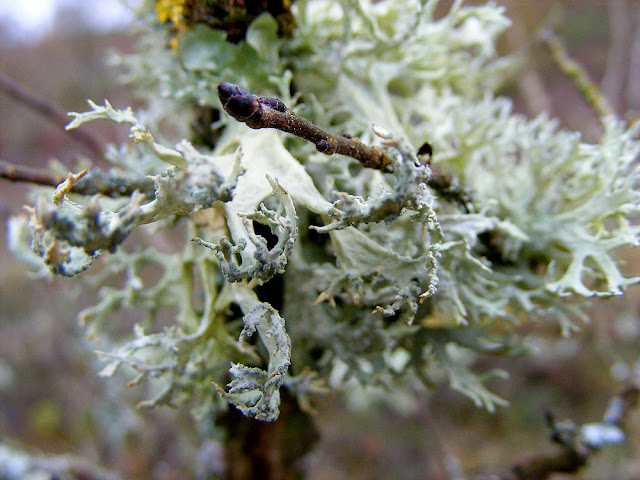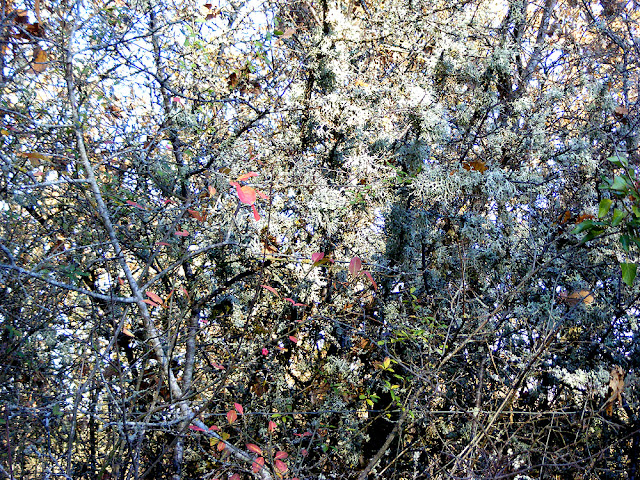Apparently Oakmoss Evernia prunastri has bounced back to abundance in Europe now that so many coal-fired power stations have closed. The lichen was sensitive to the sulphur dioxide pollution emitted by the power stations. Oakmoss was once an important ingredient in high end perfumes, but it is now superceded by a synthetic substance because so many people are allergic to the real thing. Beware if you are handling firewood too.
Oakmoss is a very special lichen, known far and wide as a precious ingredient in high end perfumes, most famously, Chanel No 5. Its scientific name is Evernia prunastri, or mousse de chêne in French, and it is not rare at all in the Touraine Loire Valley. It can be found everywhere, growing on just about any species of tree and is one of the most abundant lichens in Indre et Loire.It provides musky and woody notes to perfume, but some people have an allergic skin reaction to it -- not just women using perfume containing it, but sometimes foresters too, who are handling wood with the lichen growing on it. It is generally regarded as the most likely suspect when someone shows signs of being allergic to a perfume. In bad cases it can cause restlessness, vomiting, dizziness, tremors, kidney damage and convulsions.
Oakmoss grows in large clumps on the branches and twigs of trees, resembling bundles of tiny greenish white antlers. It is most abundant in open, windy, unpolluted locations and about 6000 tonnes a year is commercially harvested in Macedonia and Bulgaria, from where it goes to Grasse in France for processing. The compounds extracted are used as base notes and fixatives and are crucial elements in 'Fougere' and 'Chypre' style perfumes. However, it is fairly rapidly being superceded by synthetic products, following a European Directive to accurately label and list the percentages of certain extracts to which many people are allergic.
Fougere style perfumes are nearly always marketed for men -- typical brands being Brut by Fabergé and Paco Rabanne's Pour Homme. Oakmoss is combined with fragrances such as lavender, vetiver, citrus and geranium.
Chypre perfumes are based on a blend of citrus and oakmoss which is often modified with patchouli, musk and labdanum, and enhanced with rose or jasmine. The original Miss Dior was a chypre style perfume, but the formula has been changed now, probably due to issues with oakmoss allergies. Lagerfeld is a chypre perfume aimed at both sexes.
In the past it has been used by the Romans to make a purple dye, and by the Egyptians in various ways when they were mummifying a body.




No comments:
Post a Comment